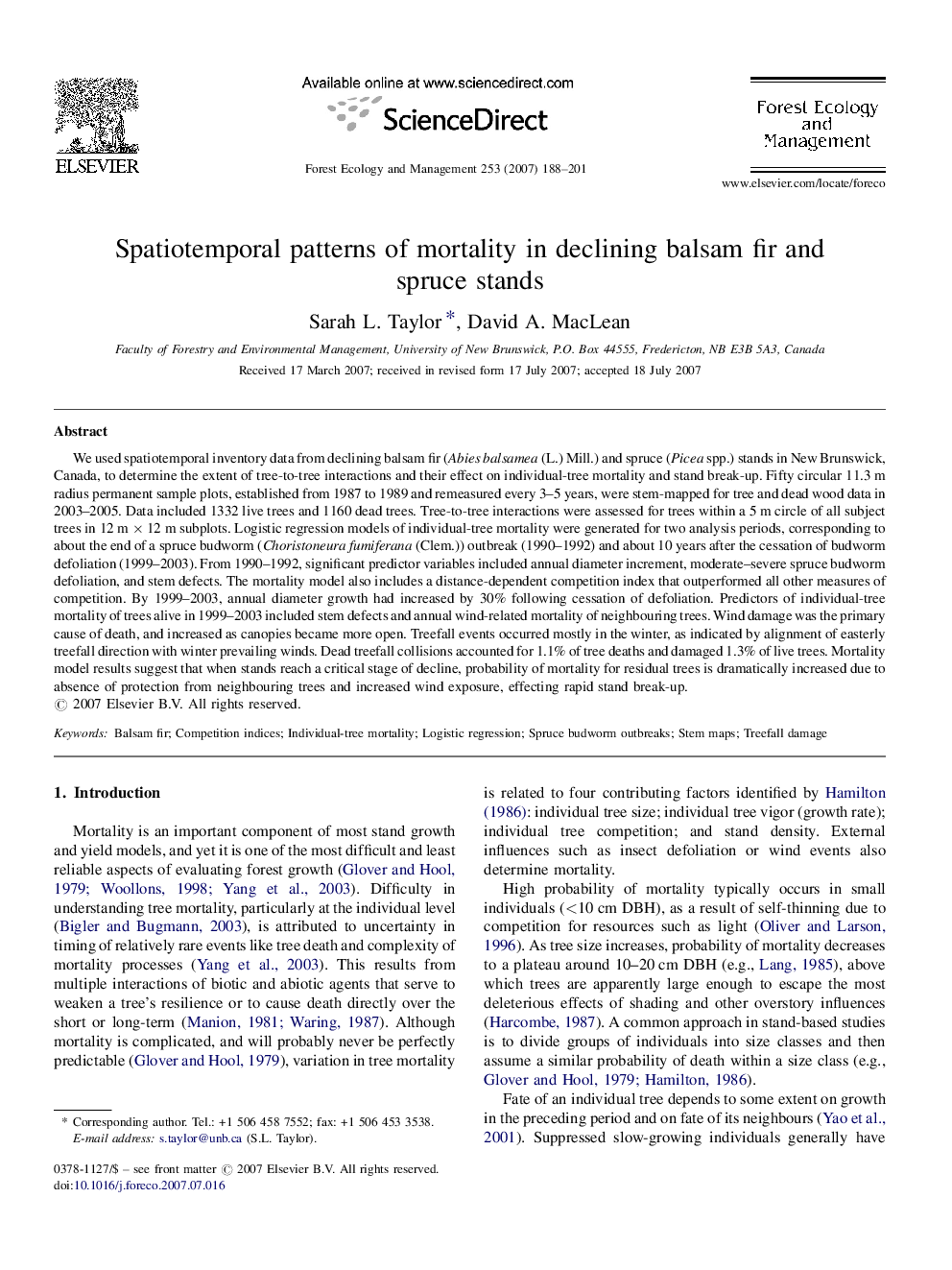| کد مقاله | کد نشریه | سال انتشار | مقاله انگلیسی | نسخه تمام متن |
|---|---|---|---|---|
| 89750 | 159354 | 2007 | 14 صفحه PDF | دانلود رایگان |

We used spatiotemporal inventory data from declining balsam fir (Abies balsamea (L.) Mill.) and spruce (Picea spp.) stands in New Brunswick, Canada, to determine the extent of tree-to-tree interactions and their effect on individual-tree mortality and stand break-up. Fifty circular 11.3 m radius permanent sample plots, established from 1987 to 1989 and remeasured every 3–5 years, were stem-mapped for tree and dead wood data in 2003–2005. Data included 1332 live trees and 1160 dead trees. Tree-to-tree interactions were assessed for trees within a 5 m circle of all subject trees in 12 m × 12 m subplots. Logistic regression models of individual-tree mortality were generated for two analysis periods, corresponding to about the end of a spruce budworm (Choristoneura fumiferana (Clem.)) outbreak (1990–1992) and about 10 years after the cessation of budworm defoliation (1999–2003). From 1990–1992, significant predictor variables included annual diameter increment, moderate–severe spruce budworm defoliation, and stem defects. The mortality model also includes a distance-dependent competition index that outperformed all other measures of competition. By 1999–2003, annual diameter growth had increased by 30% following cessation of defoliation. Predictors of individual-tree mortality of trees alive in 1999–2003 included stem defects and annual wind-related mortality of neighbouring trees. Wind damage was the primary cause of death, and increased as canopies became more open. Treefall events occurred mostly in the winter, as indicated by alignment of easterly treefall direction with winter prevailing winds. Dead treefall collisions accounted for 1.1% of tree deaths and damaged 1.3% of live trees. Mortality model results suggest that when stands reach a critical stage of decline, probability of mortality for residual trees is dramatically increased due to absence of protection from neighbouring trees and increased wind exposure, effecting rapid stand break-up.
Journal: Forest Ecology and Management - Volume 253, Issues 1–3, 15 December 2007, Pages 188–201